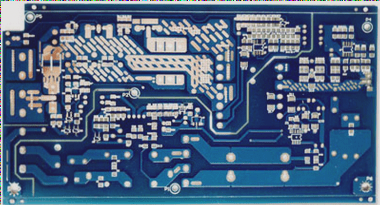—
There are numerous standards in the PCB industry, but how familiar are you with the commonly used printed circuit board standards? This article outlines several frequently referenced PCB standards for your consideration.
**IPC-ESD-2020**
A joint standard for developing electrostatic discharge control procedures. It encompasses the necessary design, establishment, implementation, and maintenance of electrostatic discharge control measures. Drawing from the historical experiences of various military and commercial organizations, it offers guidance on handling and protecting electrostatic discharge-sensitive components.
**IPC-SA-61A**
A semi-aqueous cleaning manual following soldering. This standard covers all aspects of semi-aqueous cleaning, including chemical properties, production residues, equipment, technology, process control, and considerations related to environmental safety.
**IPC-AC-62A**
A manual for aqueous cleaning post-soldering. It addresses the costs associated with manufacturing residues, the types and properties of aqueous cleaning agents, the aqueous cleaning process, necessary equipment and techniques, quality control, environmental management, employee safety, and methods for cleanliness measurement.
**IPC-DRM-40E**
A desktop reference manual for evaluating through-hole solder joints. This document provides a detailed overview of components, hole wall conditions, and solder surface coverage according to standard requirements, complemented by computer-generated 3D graphics. It includes topics such as tin filling, contact angles, tin dipping, vertical filling, solder pad coverage, and various solder joint defects.
—
This version maintains clarity and technical accuracy while slightly adjusting the phrasing.

**IPC-TA-722**
Welding Technology Evaluation Manual. This document includes 45 articles covering all aspects of soldering technology, such as general soldering, soldering materials, manual soldering, batch soldering, wave soldering, reflow soldering, vapor-phase soldering, and infrared soldering.
**IPC-7525**
Template Design Guide. This guide provides principles for designing and manufacturing solder paste and surface mount adhesive coating templates, discussing template design in the context of surface mount technology, and introducing through-hole or flip-chip components. It includes Kunhe technology aspects, such as overprinting, double printing, and staged template design.
**IPC/EIAJ-STD-004**
Specification requirements for flux, including Appendix I. This document contains technical indicators and classifications of rosin, resin, and other flux types, categorizing organic and inorganic fluxes based on halide content and activation degree. It also discusses the use of flux, substances containing flux, and low-temperature fluxes used in no-clean processes.
**IPC/EIAJ-STD-005**
Specification requirements for solder paste, including Appendix I. This document outlines the characteristics and technical index requirements for solder paste, including testing methods and metal content standards, as well as parameters like viscosity, collapse, solder ball behavior, and wetting performance.
**IPC/EIAJ-STD-006A**
Specification requirements for electronic-grade solder alloy, flux, and non-flux solid solder. This specification covers rod-shaped, strip-shaped, and powdered flux and non-flux solders, focusing on applications for electronic solder, along with naming conventions, specification requirements, and testing methods for special electronic-grade solder.
**IPC-Ca-821**
General requirements for thermally conductive adhesives. This document includes the requirements and testing methods for thermally conductive dielectrics used to bond components to suitable locations.
**IPC-3406**
Guide to Applying Adhesive on Conductive Surfaces. This guide offers insights on selecting conductive adhesives as solder alternatives in electronic manufacturing.
**IPC-AJ-820**
Assembly and Welding Manual. This document describes assembly and welding inspection technology, covering terms and definitions; details on printed circuit boards, components, pin types, solder joint materials, component installation, design specifications, soldering technology, packaging, cleaning, laminating, and quality assurance testing.
**IPC-7530**
Guide to the Temperature Profile of the Batch Soldering Process (Reflow and Wave Soldering). It presents various testing methods and techniques for acquiring the temperature curve, providing guidance for establishing optimal profiles.
**IPC-TR-460A**
PCB Wave Soldering Troubleshooting Checklist. This checklist lists recommended corrective actions for potential failures caused by wave soldering processes.
**IPC/EIA/JEDECJ-STD-003A**
Solderability Test for Printed Circuit Boards.
**J-STD-013**
Application of SGA and other high-density technologies. This document establishes specification requirements and interactions necessary for the printed circuit board packaging process, providing details for interconnecting high-performance, high-pin-count integrated circuit packaging, including design principles, material selection, board manufacturing, assembly technology, and reliability expectations based on end-use environments.
**IPC-7095**
Design and Assembly Process for SGA Devices. This document provides valuable operating information for users of SGA devices or those considering transitioning to array packaging, offering guidance for SGA inspection and maintenance.
**IPC-M-I08**
Cleaning Instruction Manual. This manual includes the latest IPC cleaning guidelines to assist manufacturing engineers in determining cleaning processes and troubleshooting.
**IPC-CH-65-A**
Guidelines for Cleaning in PCB Assembly. This document serves as a reference for current and emerging cleaning methods in the electronics industry, describing various cleaning techniques and discussing the relationships among materials, processes, and contaminants in manufacturing and assembly operations.
**IPC-SC-60A**
Manual for Solvent Cleaning After Soldering. This document discusses the use of solvent cleaning technology in both automatic and manual welding, exploring solvent properties, residues, process control, and environmental considerations.
**IPC-9201**
Handbook of Surface Insulation Resistance. This handbook contains terminology, theory, testing processes, and methods related to surface insulation resistance (SIR), along with temperature and humidity (TH) testing, failure modes, and troubleshooting guidance.
**IPC-DRM-53**
Introduction to the Electronic Assembly Desktop Reference Manual. This manual includes diagrams and photos illustrating through-hole mounting and surface-mount assembly technology.
**IPC-M-103**
Surface Mount Assembly Manual Standard. This section encompasses all 21 IPC documents related to surface mount technology.
**IPC-M-I04**
Printed Circuit Board Assembly Manual Standard. This manual features the ten most widely referenced documents concerning printed circuit board assembly.
**IPC-CC-830B**
Performance and Identification of Electronic Insulating Compounds in Printed Circuit Board Assembly. This document specifies industry standards for the quality and qualification of protective coatings.
**IPC-S-816**
Surface Mount Technology Process Guide and List. This troubleshooting guide outlines various process issues encountered in surface mount assembly and their corresponding solutions, including bridging, soldering defects, and uneven component placement.
**IPC-CM-770D**
PCB Component Installation Guide. This guide provides effective strategies for preparing components in printed circuit board assembly, reviewing relevant standards and their influence, including manual and automated assembly technologies, surface mount technology, and considerations for subsequent soldering, cleaning, and coating processes.
**IPC-7129**
Calculating Defects per Million Opportunities (DPMO) and PCB Assembly Manufacturing Metrics. This benchmark index is widely accepted among relevant industry sectors for assessing defects and quality, providing a satisfactory methodology for calculating the DPMO benchmark index.




